Visit your favourite destinations |
| A Report from birdtours.co.uk |
Birdwatching in Anglesey,
John Girdley
A visit to Anglesey at any time of the year will provide rewarding species. There are many excellent sites and several species that need to be targeted.
Key speciality birds are the Chough, Black Guillemot and the other Auks. Terns, including Roseate in summer. Divers, Grebes and Brent Geese in winter. Of course nothing can be guaranteed.......
The Key sites:
South Stack:
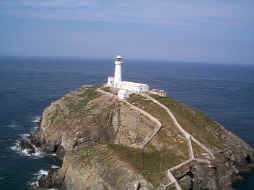 |
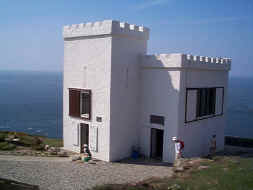 |
The RSPB have a visitor centre in Ellin's Tower and up to the date information can be obtained from here.
Choughs can be seen at South Stack at any time of the year. In Winter they are likely to be found in mixed Corvid flocks in fields near the approach road. In Summer they nest on the cliffs and can often be seen near the end car park. Other Corvids to watch out for include regular Raven and in recent times a single Hooded Crow that seems to have taken up residence.
Auks, including Puffin, Guillemot and Razorbill nest here and return to the cliffs in early spring. They are present until midsummer. Joining them on the cliffs are Kittiwakes and Fulmar. Gannets can be seen offshore for most of the year in varying numbers. Manx Shearwaters become apparent in the summer months. In strong offshore winds in Autumn, many pelagic species can be seen including the Skuas, of which Arctic predominates.
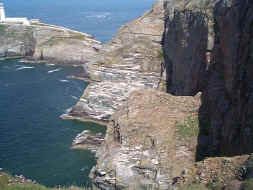
Stonechats are to be found at South Stack throughout the year. During migration times the coastal scrub in which they breed can be alive with chats and warblers.
Cemlyn Lagoons:
Situated near the NW corner of Anglesey, Cemlyn Lagoons are separated from the sea by a shingle spit. There is parking at either end of Cemlyn, though the westernmost car park is to be preferred as it has a notice board on which up to date birding information is posted.
The Lagoons hold a sizable Tern colony during the breeding season. Sandwich Terns predominate, with Common and Arctic in lesser numbers. In former years this was also a breeding site for the rare Roseate Tern. Now they are just an occasional visitor.
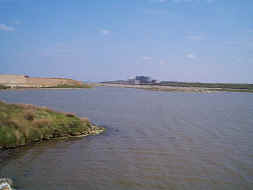 |
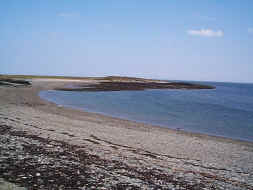 |
The headland at the mouth of the bay is a reliable site for Stonechat. In the summer months, Manx Shearwaters can pass here in considerable numbers.
Cemlyn has a good track record for rarities. Bridled Tern, Black-winged Stilt and Shorelark are amongst the ones that I have seen here.
In winter, Cemlyn holds a good variety of wildfowl including Swans, waders can be found in the bay and sea duck, Grebes and Divers are possible offshore.
Penrhos Coastal Park:
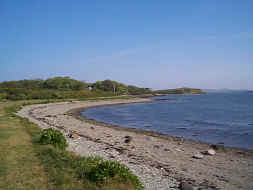
Crossing onto Holy Island, there is a large area of mud or sea (depending on the state of the tides). At the end of this turn left into a car park at Penrhos Coastal Park. In winter months the sea, here, regularly holds the rarer Grebes (especially Red-necked) and Divers. There is a winter flock of Pale-bellied Brent Geese and Black Brant has joined them in the past.
Holyhead Harbour and Holyhead Bay:
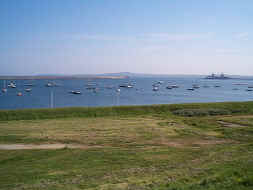
These two areas hold a very similar range of species to the above, the location of the birds often depending on the state of the tide.
Fedw Fawr:
Fedw Fawr is situated near to the NE tip of Anglesey about six miles north of Beaumaris along a very narrow track with a small cliff top car park at the end.
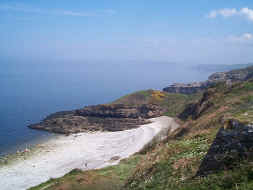
It is a reliable site for Black Guillemot, which can usually be found immediately below the cliff to the west of the car park. Other Auks and sea birds regularly pass off shore. The Maritime Heath of the cliff tops has Thrift and the beautiful blue flowers of Squill. Lots of warblers breed and migrants can sometimes be found.
Point Lynas:
Situated about five miles east of Amlwch, Point Lynas is the best sea watching site in North Wales. May and autumn are the best. All of the Skua's, Shearwaters, Terns and Petrels regularly recorded in Britain have been seen from here. A wind with a northerly component, preferably force four or greater is required.
Bibliography
Where to Watch Birds in Wales Dave Saunders
Why not send us a report, or an update to one of your current reports?